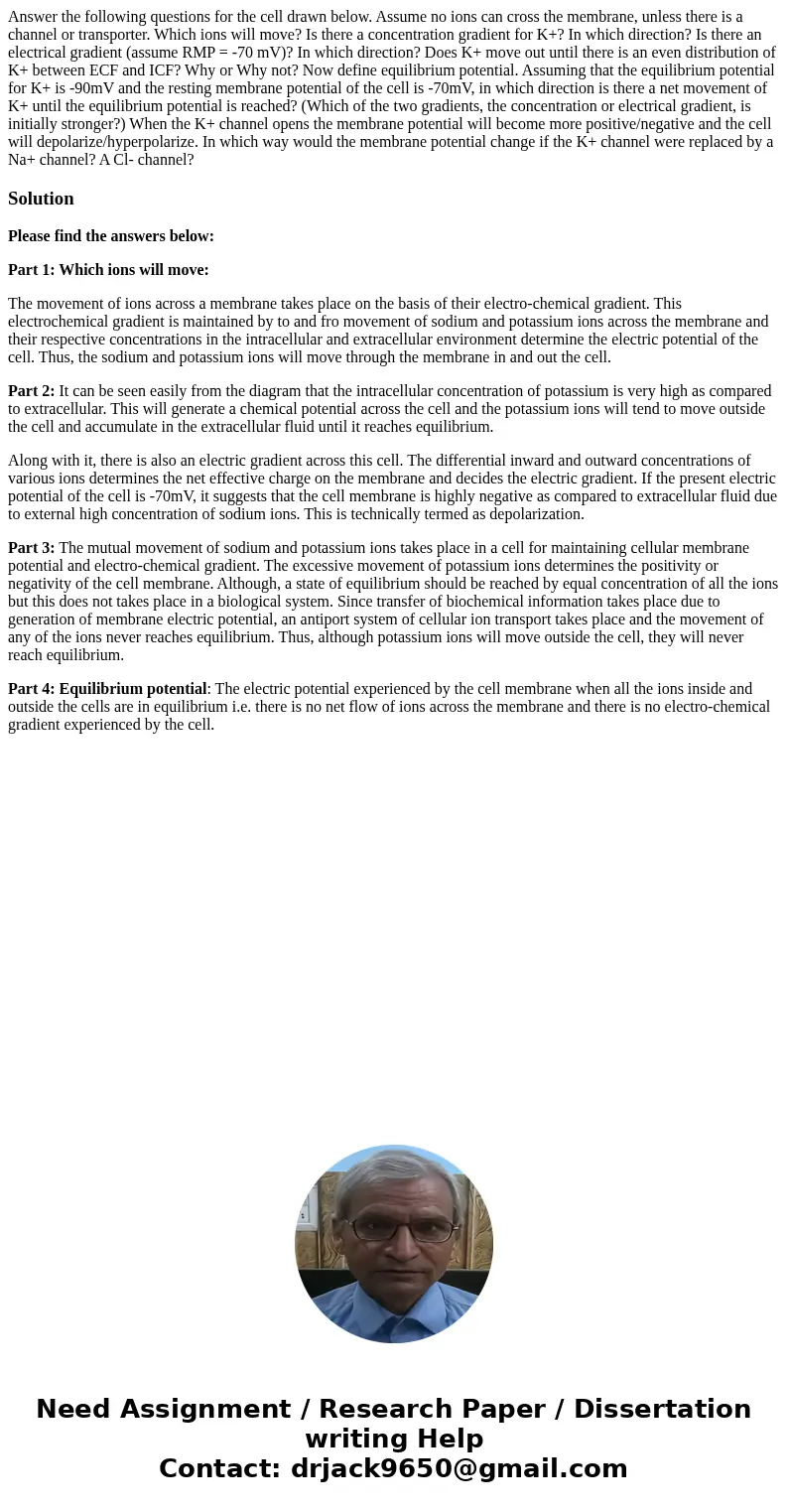Answer the following questions for the cell drawn below Assu
Solution
Please find the answers below:
Part 1: Which ions will move:
The movement of ions across a membrane takes place on the basis of their electro-chemical gradient. This electrochemical gradient is maintained by to and fro movement of sodium and potassium ions across the membrane and their respective concentrations in the intracellular and extracellular environment determine the electric potential of the cell. Thus, the sodium and potassium ions will move through the membrane in and out the cell.
Part 2: It can be seen easily from the diagram that the intracellular concentration of potassium is very high as compared to extracellular. This will generate a chemical potential across the cell and the potassium ions will tend to move outside the cell and accumulate in the extracellular fluid until it reaches equilibrium.
Along with it, there is also an electric gradient across this cell. The differential inward and outward concentrations of various ions determines the net effective charge on the membrane and decides the electric gradient. If the present electric potential of the cell is -70mV, it suggests that the cell membrane is highly negative as compared to extracellular fluid due to external high concentration of sodium ions. This is technically termed as depolarization.
Part 3: The mutual movement of sodium and potassium ions takes place in a cell for maintaining cellular membrane potential and electro-chemical gradient. The excessive movement of potassium ions determines the positivity or negativity of the cell membrane. Although, a state of equilibrium should be reached by equal concentration of all the ions but this does not takes place in a biological system. Since transfer of biochemical information takes place due to generation of membrane electric potential, an antiport system of cellular ion transport takes place and the movement of any of the ions never reaches equilibrium. Thus, although potassium ions will move outside the cell, they will never reach equilibrium.
Part 4: Equilibrium potential: The electric potential experienced by the cell membrane when all the ions inside and outside the cells are in equilibrium i.e. there is no net flow of ions across the membrane and there is no electro-chemical gradient experienced by the cell.

 Homework Sourse
Homework Sourse